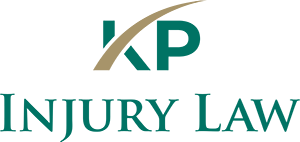
"Helping people is all I've ever wanted to do."
Kyle Peiter Founding Attorney
Injured in a motorcycle crash?
Every case is different, results may vary depening on the facts and legal circumstances. The attorney featured on this page is licensed in Tennessee and Georgia. For a full list, please see our locations page.

"Helping people is all I've ever wanted to do."
Kyle Peiter Founding Attorney

Crash Info
Eligibility
What Now?
Common Types of Motorcycle Accidents
Left-Turn Accidents
Left-turn accidents are among the most common causes of motorcycle crashes. These occur when a car makes a left turn in front of an oncoming motorcycle. Drivers often misjudge the speed or overlook the rider entirely, leading to serious collisions.
Lane-Change Collisions
Lane-change collisions happen when drivers fail to check blind spots before moving into another lane. Because motorcycles are smaller and less visible, they are more likely to be sideswiped or forced off the road.
Rear-End Crashes
Rear-end crashes can be especially dangerous for motorcyclists. What might be a minor bump between two cars can throw a rider from their bike and cause life-altering injuries.
Dooring Accidents
Dooring accidents occur when a driver or passenger opens a car door into the path of an oncoming motorcycle. These sudden obstructions give riders little time to react, often resulting in high-impact crashes.
Drunk or Distracted Driving
Drunk or distracted drivers pose a heightened risk to motorcyclists. Any lapse in focus can be catastrophic, as motorcycles are harder to see and require quicker reaction times from other drivers.
Hazardous Road Conditions
Hazardous road conditions such as potholes, loose gravel, slick pavement, or poorly marked construction zones can be extremely dangerous for riders. Unlike cars, motorcycles have less stability and less margin for error on unsafe roads.
Injuries Due to Motorcycle Crashes
Death
Motorcycle accidents can be fatal, especially in high-speed collisions or when a rider is struck by a larger vehicle. Surviving family members are often left grieving and facing financial burdens, which may warrant a wrongful death claim.
Spinal Cord Injuries
Damage to the spinal cord can result in partial or full paralysis. These injuries often require lifelong medical care, rehabilitation, and dramatically impact quality of life.
Road Rash
When a rider is thrown from their bike, they may skid across the pavement. Road rash can tear through clothing and skin, sometimes requiring skin grafts and leading to infection or permanent scarring.
Fractures and Broken Bones
Motorcycle accidents frequently result in broken arms, legs, ribs, or hips. These injuries can take months to heal and may require surgery, physical therapy, and extended time off work.
Internal Injuries
Blunt force trauma can cause internal bleeding or damage to organs like the liver, kidneys, or lungs. These injuries are life-threatening and may not be immediately visible after a crash.
Amputations
In severe crashes, a limb may be crushed beyond repair or severed completely. Amputations are catastrophic injuries that require long-term rehabilitation and the use of prosthetics.
Eligibility for a Motorcycle Accident Lawsuit
To pursue a motorcycle accident claim, you must have suffered an injury or financial loss as a direct result of the crash. This includes physical injuries like broken bones, head trauma, or soft tissue damage, as well as economic damages such as medical bills, lost wages, or property repair costs. Without documented harm—whether physical, emotional, or financial—there may be no legal basis for a personal injury lawsuit.
To have a valid personal injury claim, someone else must be at fault for the accident. This could be due to negligent actions like distracted driving, speeding, failing to yield, or running a red light. Establishing that another party’s carelessness or recklessness directly caused your injuries is a critical part of proving liability in a motorcycle accident lawsuit.
If the at-fault driver is insured, their liability coverage may compensate you for medical expenses, lost income, and other damages. Most motorcycle accident claims are resolved through insurance, but if the driver is uninsured or underinsured, you may still have options—such as filing a claim through your own uninsured motorist coverage or pursuing a personal injury lawsuit directly. Confirming available insurance is a key step in determining how compensation will be recovered.
If all three of the above conditions apply to your situation, you may be eligible to file a personal injury claim. Meeting these basic requirements is often the first step toward pursuing compensation for your medical bills, lost wages, and other damages.
Disclaimer: Every case is unique. Eligibility and potential compensation depend on the specific facts, circumstances, and evidence involved in your situation.
8 Steps if you're in a motorcycle crash.
Step 1
Get to Safety and Check for Injuries
Step 2
Call for Medical Help
We help people injured in motorcycles crashes get the medical care and financial support they need to move forward.
Step 3
Report the Crash to Authorities
Notify local law enforcement and stay at the scene until officers arrive to file a police report.
Step 4
Take Photos of the Scene
8 Steps if you're in a motorcycle crash.
In the moments immediately following a motorcycle accident, it’s natural to feel overwhelmed or unsure of what to do next. But the steps you take right after the crash can have a lasting impact on both your physical well-being and your ability to pursue a successful injury claim. Acting quickly and thoughtfully helps protect your health, ensures the safety of others, and creates a clear record of what happened—critical elements in any legal or insurance-related process that may follow.
Start by getting yourself and others out of harm’s way, if it’s safe to do so, and check for injuries. Even if no one appears seriously hurt, calling for medical assistance is essential; emergency responders can assess the situation and document your condition, which often becomes important evidence. From there, notify the authorities so they can file an official report. While waiting, use your phone to take pictures of the damage, road conditions, and anything else that may be relevant. These early steps may seem basic, but they form the foundation of a strong, well-documented case.
Step 5
Exchange Information with Other Drivers
Step 6
Talk to Witnesses (and get their info)
If anyone saw the crash, ask for their contact info—they may be valuable in supporting your version of events.
Step 7
Notify Your Insurance
Report the accident to your insurance company as soon as possible to preserve your rights and coverage.
Step 8
Speak with an Injury Lawyer
Before accepting any settlement, talk to an experienced personal injury lawyer who can help you understand your rights and maximize your compensation.
Once the immediate scene has been handled, the next steps are just as important for protecting your rights and strengthening your personal injury claim. Be sure to exchange contact and insurance details with the other driver, and don’t overlook the value of witness statements—getting names and numbers from people who saw the crash can provide powerful third-party evidence to support your case. These details often play a key role in determining liability and helping you recover full compensation.
After the accident, notify your insurance company promptly, but keep your statements factual and limited. Before signing anything or accepting a quick payout, speak with a personal injury lawyer who can explain your options and advocate for your best interests. At KP Injury Law, we help accident victims navigate every stage of the process—from dealing with insurance companies to pursuing maximum compensation for medical bills, lost wages, and pain and suffering. If you’ve been hurt in a car crash, taking these final steps seriously can make all the difference. Contact us today to protect your rights and move forward with confidence.
Step 6
Talk to Witnesses (and get their info)
Step 7
Notify Your Insurance
Step 8
